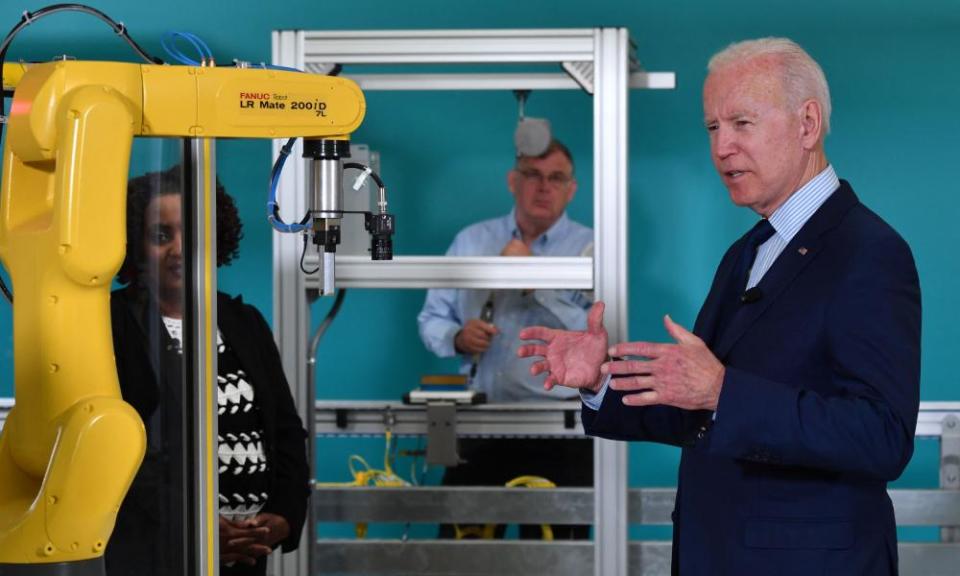US economy returns to pre-pandemic level but misses growth forecasts

The US economy has returned to its pre-pandemic level despite growing at a weaker rate than expected in the second quarter.
Gross domestic product (GDP) increased at a 6.5% annualised rate in the three months to the end of June, according to figures from the US Commerce Department on Thursday, as government financial support helped power a sharp rise in consumer spending.
This marked an increase on a revised rate of 6.3% in the first three months of the year, but was lower than forecasts of an 8.5% rise – stoking fears over a faster-than-expected slowdown in the world’s largest economy amid the spread of the Delta variant of Covid-19.
Shortages of workers, raw materials and computer chips in recent months have also threatened to weigh on growth and drive up inflation.
Related: US inflation hits 13-year high in June
US GDP after adjusting for inflation returned to levels last recorded at the end of 2019 – reflecting strong growth helped by the rollout of the coronavirus vaccine. This made the US one of the first advanced economies to return to its pre-pandemic level.
China, the world’s second largest economy, last autumn became the first major country to recover from the pandemic-induced global recession. The UK, having suffered one of the worst downturns in the advanced world, is not expected to recover until at least later this year.
The US recovery comes after the country’s economy shrank by 3.4% in 2020 – revised from a previous estimate of 3.5% but still the biggest drop in the country’s GDP since 1946.
Analysts said the US economy had grown almost as fast in the first half of 2021 as some forecasters had expected for the entire year, helped by president Joe Biden’s $1.9tn (£1.4tn) stimulus package agreed this spring – though the economy remains about 2% below where it would have been without Covid-19.
The latest snapshot revealed an 11.8% rise in household spending after the reopening of shops and restaurants. However, growth was held back by a fall in residential investment and a decrease in federal government spending.
Robert Alster, chief investment officer at wealth manager Close Brothers Asset Management, said all eyes would now focus on the economy’s performance in the third quarter in the hope that faster rates of growth come through.
“This may not be possible. The global industrial boom is seeing early signs of slowdown – an end was inevitable, but we are now seeing clear signals that deceleration has started,” he said.
“Consumers seem to be emerging from lockdown with increased caution, exacerbated by inflation causing an increase in the price of common goods. And with the Delta variant on the rise and certain states reintroducing the mask mandate, it is clear that the US is not yet out of the woods.”

 Yahoo Finance
Yahoo Finance 